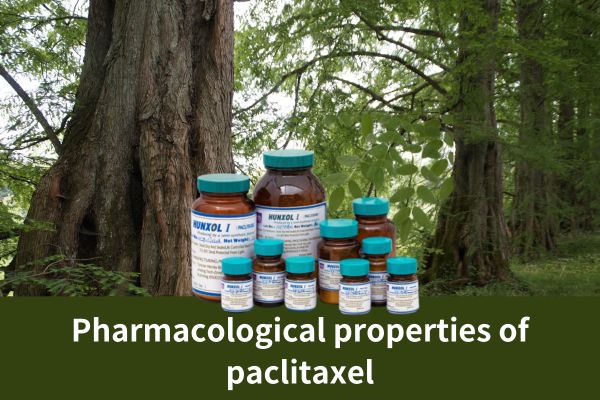Paclitaxel is a natural diterpenoid with extensive anti-tumor activity, and its unique pharmacological properties make it an important drug widely used in the treatment of various malignant tumors. In this paper, the pharmacological properties of paclitaxel will be described in detail, including its mechanism of action, cell cycle regulation, interference with apoptosis, and interaction with other molecules.
1. Mechanism of action
By binding to tubulin, paclitaxel inhibits the dynamic stability of microtubules, thereby interfering with nuclear division and cell motility. When it binds to tubulin, it blocks the dynamic reassembly of microtubules, resulting in increased microtubule stability and preventing cells from completing the normal mitosis process. In addition, paclitaxel can also affect the polarity and orientation of microtubules and inhibit cell motility and invasion.
2. Cell cycle regulation
The regulation effect of paclitaxel on cell cycle was mainly reflected in G2/M phase arrest. It prevents cells from entering mitosis by inhibiting the dynamic recombination of microtubules, leading to cell cycle checkpoint activation. In addition, paclitaxel also interferes with the normal process of the cell cycle by regulating the expression and phosphorylation of cell cycle-related proteins.
3. Interferes with apoptosis
Another important effect of paclitaxel on tumor cells is to interfere with the apoptosis process. It can promote or inhibit apoptosis through several pathways. On the one hand, paclitaxel can promote apoptosis by affecting the expression and function of Bcl-2 family proteins, changing mitochondrial membrane potential and releasing apoptosis-related proteins. On the other hand, paclitaxel can also inhibit apoptosis by activating anti-apoptotic molecules in the apoptotic signaling pathway, such as Akt.
4. Interactions with other molecules
Paclitaxel not only binds to microtubules, but also interacts with other molecules to affect its pharmacological effects. For example, paclitaxel interacts with cytochrome P450 enzyme, affecting its pharmacokinetics; It interacts with transporters and affects their transmembrane transport and efflux. It interacts with drug-resistance related proteins and affects the sensitivity of tumor cells to paclitaxel.
In summary, paclitaxel exerts its anti-tumor effects through various mechanisms such as binding to tubulin, interfering with cell cycle regulation, influencing apoptosis, and interacting with other molecules. However, there are still some problems with the pharmacological properties of paclitaxel, such as the development of resistance and the occurrence of side effects. Therefore, further studies are needed to optimize the clinical effects of paclitaxel.
Note: The potential benefits and applications presented in this article are derived from the published literature.
Post time: Jan-02-2024
